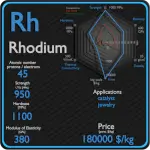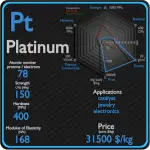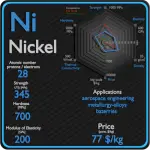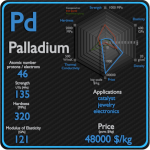This article contains comparison of key thermal and atomic properties of palladium and silver, two comparable chemical elements from the periodic table. It also contains basic descriptions and applications of both elements. Palladium vs Silver.
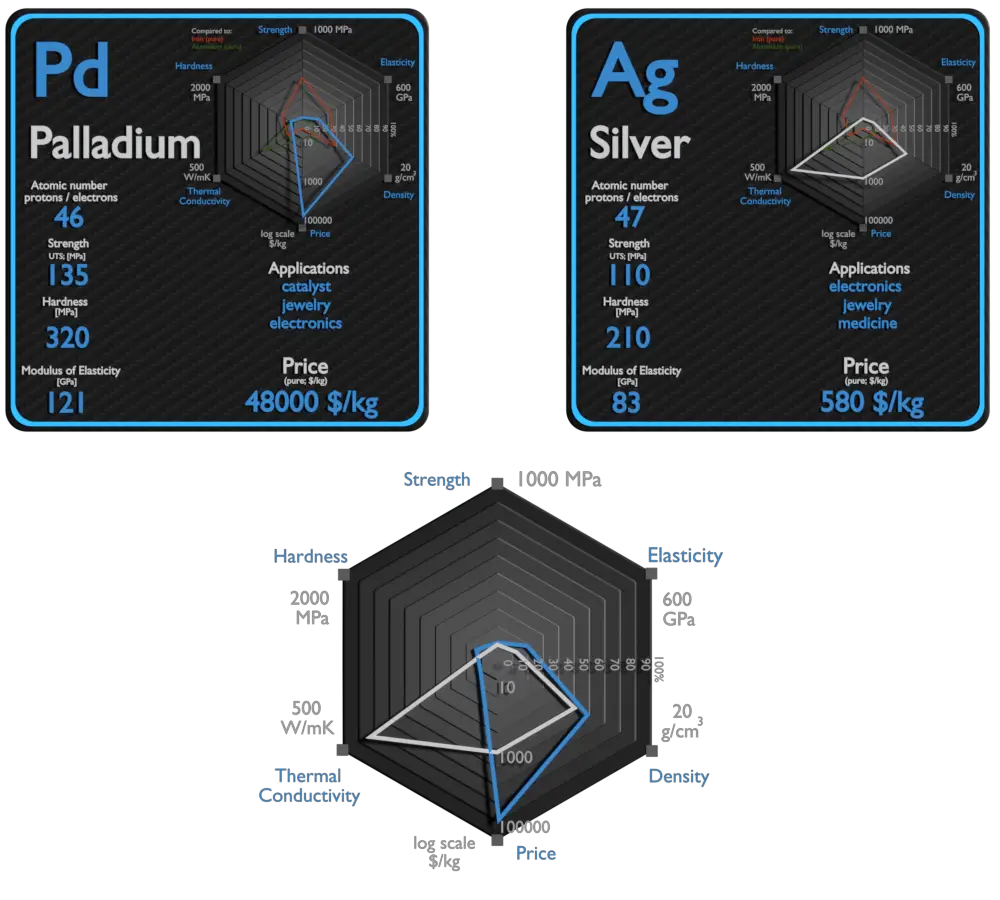
Palladium and Silver – About Elements

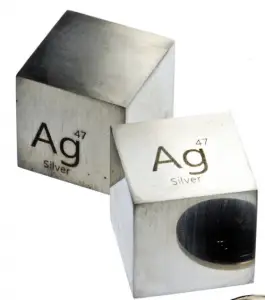
Source: www.luciteria.com
Palladium and Silver – Applications
Palladium
More than half the supply of palladium and its congener platinum is used in catalytic converters, which convert as much as 90% of the harmful gases in automobile exhaust into less noxious substances. Palladium is also used in electronics, dentistry, medicine, hydrogen purification, chemical applications, groundwater treatment, and jewelry. Palladium-based alloys are being extensively used in fuel cell technology applications. The metal is also employed in historic photographic printing process. Palladium has been used as a precious metal in jewelry since 1939 as an alternative to platinum in the alloys called “white gold”.
Silver
Silver has long been valued as a precious metal. Silver metal is used in many bullion coins, sometimes alongside gold. Silver has many important, far-reaching technological and electronic applications. It’s used in everything from cell phones, computers and semiconductors to automobiles, water-purification systems and—because it is the best conductor of heat of all elements—spacecraft solar radiation tiles. Silver is of the upmost importance in photography (where approximately 30% of the U.S. Industrial consumption goes into this application). The medical uses of silver include its use in wound dressings, creams, and as an antibiotic coating on medical devices. Wound dressings containing silver sulfadiazine or silver nanomaterials may be used on external infections.
Palladium and Silver – Comparison in Table
| Element | Palladium | Silver |
| Density | 12.023 g/cm3 | 10.49 g/cm3 |
| Ultimate Tensile Strength | 135 MPa | 110 MPa |
| Yield Strength | 30 MPa | 45 MPa |
| Young’s Modulus of Elasticity | 121 GPa | 83 GPa |
| Mohs Scale | 4.8 | 3.25 |
| Brinell Hardness | 320 MPa | 210 MPa |
| Vickers Hardness | 400 MPa | 251 MPa |
| Melting Point | 1554.9 °C | 961.78 °C |
| Boiling Point | 2963 °C | 2162 °C |
| Thermal Conductivity | 72 W/mK | 430 W/mK |
| Thermal Expansion Coefficient | 11.8 µm/mK | 18.9 µm/mK |
| Specific Heat | 0.24 J/g K | 0.235 J/g K |
| Heat of Fusion | 17.6 kJ/mol | 11.3 kJ/mol |
| Heat of Vaporization | 357 kJ/mol | 250.58 kJ/mol |
